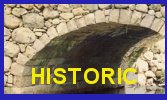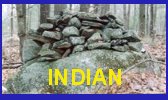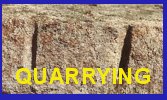



John Mullicken (1690-1737)
John worked with his brother Robert, Jr. from 1726 onward. His lettering is quite close to his brother, Robert’s but his design styles are different. John was a blacksmith by trade. Gravestone carving was a means for John to express himself artistically. John helped teach his younger brother, Joseph how to carve along with Robert, Jr. However, John never let any apprentice work on his headstones.
 |
Molded flower design Tristram Coffin – 1727 – Newbury, MA
Six pedaled flower have molded look – John had the ability to round off edges. This gave the design a soft smooth look and feel. Secondary designs under face were usually attached, low and spread out. Note strange use of upper and lower case letters in the words “and” and “the”. There does not appear to have been any standard lettering system. As for height of each letter that was done to keep all letters at the same height. Also, guide lines can be seen on the bottom half of the inscription.
 |
Flared, fanned out whorl Benaiah Titcom – 1728 – Newbury, MA
John had another signature style – fanned out designs. On this gravestone he used his style of whorl. The whorl comes to a point on inside and a wide blade on outer edge giving it a fanned out look. Sometimes he used the standard raised design with straight sides.
 |
Sculptured look John Stickney – 1733 – Newbury, MA
This was John’s finest piece of artwork. Secondary designs blend in with primary designs. They are refined, sculpted and beautiful to look at. He chose a simple refined side border that reflected the secondary designs in the lunette design. Finials have his smooth, molded flower design.
 |
Child’s gravestone Marthy, daughter of Trustram & Dorathy Greenleaf – 1735 – Newburyport, MA (formerly Newbury)
This little girl’s gravestone shows John’s imagination and creativity. The small stone has hair like design beside face and a simple pie with four pieces. It gives the impression of a child.

